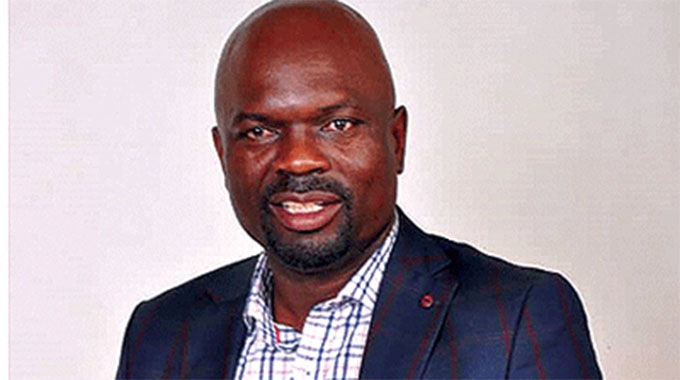Boeing self-certification raises questions of conflict of interest

The Federal Aviation Administration has for years allowed many aerospace companies to use their own workers in place of FAA inspectors, a system that is coming under scrutiny after two Boeing 737 Max jetliners crashed, killing the crews and passengers.
Boeing, like Airbus with its A320, wanted top upgrade the old 737 design with new fuel-efficient engines. For the Airbus this was not too difficult, but Boeign faced a problem with the smaller 737 wing solved by moving the engines forward.
But to avoid having pilots having to be retrained and recertified on the new 737 Boeing developed software to reproduce the flying handling of the older versions. And it is that software which is now udner the limelight.
A total of 79 companies are allowed under federal policies to let engineers or other workers considered qualified report on safety to the FAA on systems deemed not to be the most critical rather than leaving all inspections to the government agency.
To critics, it’s a regulatory blind spot.
“The FAA decided to do safety on the cheap — which is neither safe nor cheap, and put the fox in charge of the henhouse,” said Sen. Richard Blumenthal, D-Conn., in a statement. He’s vowed to introduce legislation “so that the FAA is put back in charge of safety.”
The safety inspection program operates widely under the benign name of Organization Designation Authorization. It has come under renewed attention after the crashes of the two jets — Lion Air off Indonesia, an accident that killed 189 in October, and the Ethiopian Airlines crash last month that claimed 157 passengers and crew.
The list of companies that applied and were approved by the FAA include some of the best-known names in aviation, such as private aircraft makers Learjet and Gulfstream and helicopter companies Bell and Sikorsky. Companies choose workers as FAA “designees,” allowing them to stay on the payroll while assessing safety for the federal agency, which then reviews their work.
Boeing, like many aviation companies, depended on this system to stay competitive.
The airplane maker unveiled the more fuel-efficient Max version of the 737, an aircraft series first designed in the 1960s. The new 737 Max model approved by the FAA in 2017 was made to compete with archrival Airbus and its popular A320 jetliner.
To get the 737 Max airborne, Boeing developed a software-based automated anti-stalling system that is being blamed as having been a key factor in both crashes.
The system was designed to make pilots feel like the aircraft had the same flying dynamics as previous versions.
But in the two crashes, either the system or the sensors on which it depends malfunctioned, pushing the plane’s nose toward the ground as pilots tried to keep the aircraft aloft.
Dan Elwell, acting director of the Federal Aviation Administration, told the Senate Commerce Subcommittee on Aviation and Space last month that the system, the Maneuvering Characteristics Augmentation System, was initially supervised directly by the FAA, but was then handed over to ODA supervision once the agency’s “comfort level” with the system had risen.
It is those kinds of disclosures that are raising concern.
“As I understand it, any system that was safety critical was supposed to have more direct FAA oversight,” said U.S. Rep Peter DeFazio, D-Ore., chairman of the House Committee on Transportation and Infrastructure.
The larger issue, DeFazio said, is the extent to which the FAA became complicit in Boeing’s desire to rush a plane that could compete against Airbus in a way that could have compromised safety.
“We’ve got to find out whether the FAA was pressured by Boeing,” said DeFazio, who plans to hold a committee hearing on the issue.
Corporate self-inspection under FAA auspices has been allowed in various forms for decades. But it wasn’t until 2005 that the ODA system was created to allow private-sector employees deemed to be highly qualified to be appointed to be the FAA’s eyes and ears in the development of aircraft.
The rationale was that the private sector inspectors could keep tabs on the more routine features of aircraft under development, allowing the FAA’s team to focus on the harder, riskier systems. Mindful of commercial aviation’s safety record in the U.S. — there wasn’t a single passenger death since 2009 until a Southwest Airlinespassenger died after a 737 engine failure a year ago — the ODA program was reauthorized in 2018.
And it still has the FAA’s support. The FAA said in a statement that companies aren’t left to police themselves. “The agency is directly involved in the testing and certification of new and novel features and technologies,” it said.
But the program hasn’t been without its issues. In 2015, the Transportation Department’s inspector general said in a report that he had found four instances of self-audits in which employees working under the ODA program said they felt time pressure, “which could lead to rushing safety-critical tasks to meet safety schedules.” Inspector General Calvin Scovel told the Senate subcommittee that two of those instances had come from Boeing.
Boeing said in a statement to USA TODAY that the process of using “employees who are designated representatives of the FAA” has led to the safest transportation system in the world. Its workers “act independently on behalf of the FAA when performing this role.”
The program is in no danger of being abolished. The FAA estimates it would need to hire 10,000 more inspectors at a cost of $1.8 billion in additional payroll costs if the program didn’t exist.
It isn’t just Congress that’s skeptical. A union representing FAA inspectors, the Professional Aviation Safety Specialists, has been opposed to the expansion of the ODA system for years.
“They have expanded the ODA program too far,” said Mike Perrone, the union’s president.
Larry Rooney, president of the Coalition of Airline Pilots Associations, an umbrella organization of four airline-pilot unions, takes a more nuanced view.
While acknowledging there are issues connected with letting aircraft makers take part in an oversight role, he said the FAA might not have the expertise or the manpower to handle the task itself.
The whole system is based on trust between an aviation company and the regulator. And, Rooney added, referring to the latest 737 Max crash, it’s yet to be seen where the fault in the development of the MCAS system lies.
“Was there a breakdown in this particular incident,” he said, “or a rush to get the plane out? That’s a story for another day.” — US Today.











Comments